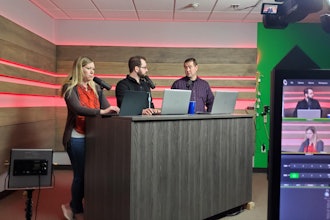Architecting an Effective Pricing/Sales Program to Drive “Value Capture”
Research confirms what most distribution executives intuitively recognize: businesses with effective value-based pricing/selling strategies outperform those that lack these capabilities, and rely on cost/margin-based techniques instead. Value-based pricing/selling tools are proven ways to help B2B distributors more effectively capture their fair share of the market value created by their distribution business. An effective roadmap to building a strategic value based pricing/selling capability in B2B distribution includes the following 4 steps:
1. Understand/Quantify Customer Value in Major Market Segments
In this step, the distributor develops a capability to analyze/quantify the benefits that different types of customers derive from doing business with the distributor. Linkages are identified between features of the distributor’s offerings, and drivers of customer value in different market segments. Competitive intelligence is collected. Sample calculations are defined, to help quantify how particular value-drivers reduce customers’ costs, and how they help drive customers’ revenues, relative to applicable competitive alternatives. This analysis is performed at a segment level: different customer types may value different things, and different competitors may be at play in different industries, geographies, and product markets.
Free Whitepaper: Pricing Technology Myth vs. Reality
For example, a B2B distributor may find that its ability to provide emergency deliveries is key driver of value for many commercial contractors served by the business. After all, if the contractor’s team is unable to proceed with a project because a part (which they might not have previously realized they would need) is missing, this can lead to inefficient labor utilization, and drive up the contractor’s cost of completing the project by disproportionately higher amount than the cost of the part involved.
2. Align Prices with Customer Value
In this step, the distributor leverages key learnings from step one to develop updated price matrices/price segmentation schemes, so the price structure better reflects how much value is being delivered in particular parts of the market. Depending on the extent of the distributor’s pricing power in a particular segment, and depending on where historical system prices stood, in particular segments the analysis may suggest that the distributor should raise or lower system price points, to help ensure an appropriate balance between the need to be competitive, and not leaving money unnecessarily on the table. In high-transaction count distribution environments, the distributor’s understanding of segment-specific willingness-to-pay levels may be refined using statistical methods to estimate the segment-specific elasticity of volume to price changes. The analysis results in a recommended set of revised, more value-aligned prices, which better reflect segment-specific levels of willingness-to-pay.
Accordingly, the B2B distributor in our example may choose to review its customer history data, and form different segments of contractor customers depending on their high, medium, or low usage patterns for emergency deliveries. If key competitors in the commercial contractor segment (such as online suppliers) do not provide a similarly reliable comprehensive emergency delivery service for across the types of products subject to emergency delivery requests, then the distributor may conclude that it has significant pricing power in the segment of “high frequency emergency delivery” customers, and update its price position accordingly.
3. Develop/Improve Communication/Negotiation Tools to Describe/Defend Customer Value
In this step, the distributor develops and deploys tools for use by its sales force, to help effectively convince customers that the prices being charged are justified by the value the customer derives from doing business with the distributor. These tools often include segment-specific value-messages/value props, and talk tracks. They should also include easy-to-reference libraries of sample calculations/logic to quantify customer benefits vs. relevant alternatives in key market segments.
In our example, the sales force would be trained to review easy-to-reference tools when pricing issues come up in customer discussions. If pricing comes in discussions with a high emergency deliveries usage” customer, these tools would quickly guide the sales rep to review recent customer-specific emergency delivery data, and present the rep with ready-to-use, relevant talk tracks/customer value calculation logic, to help describe the value of the distributor’s emergency delivery service at the account (e.g., “what does it cost you when half of your team stands around for an hour doing nothing, because they are waiting on a part?”).
Even if the distributor’s sales force is well-equipped and trained to use these tools, certain customers will refuse to openly acknowledge the distributor’s true value. Some of these customers may be “poker players” who actually derive significant benefit. To effectively deal with these types of customers, the distributor must also equip its sales force with tools to present price-value trade-offs in negotiations. Poker players want a lower price, but they will not want to sacrifice value to get it! Accordingly, in our example, the sales rep dealing with a poker-player “high emergency delivery usage” contractor could be guided to offer to the customer the option of implementing (or increasing) minimum order quantities or other fees for future emergency deliveries - in exchange for lowering some prices.
4. Operationalize/Align Organizational Behaviors Around Customer Value
In this step, the distributor’s goal is to align organizational culture and processes to better support customer-value focus. Training programs are held to get everyone familiar with the new value communication/negotiation tools, and instill confidence across the organization that the price schedules generated by the updated pricing strategies are aligned with customer value (new price schedules may also be rolled out in this step 4). Training participants are challenged to transition from cost/margin-driven pricing philosophies, and realize that “profit” is not a dirty word: value-based pricing means capturing your fair share of the value your distribution business is creating for your customers. It is “fair” for your distribution business to capitalize from the investments you have been making in your business to better serve them!
It is often said: “what gets measured gets managed.” Value based pricing/selling is no exception. Accordingly, in this step the distributor also develops reporting to gauge the effectiveness of the new pricing/value capture strategies. Such reporting can enable management not only to adjust tools and prices as market feedback is received, but also to leverage controls and incentive schemes to ensure the value pricing/selling tools are being utilized.
Lee Nyari is Managing Partner of The Innovative Pricing Group, LLC, a consultancy that develops custom-designed, high-ROI scientific price optimization, value-based pricing, and strategic price management solutions for B2B distribution organizations. Lee is a seasoned consultant and B2B distribution pricing executive with over fifteen years of experience leading strategic pricing projects. His distribution industry pricing background is coupled with engagement leadership roles at top-tier strategy consulting firms. Lee is a Certified Pricing Professional, a Certified Public Accountant, and he holds a full-time MBA in Marketing Strategy from Kellogg School of Management.






















